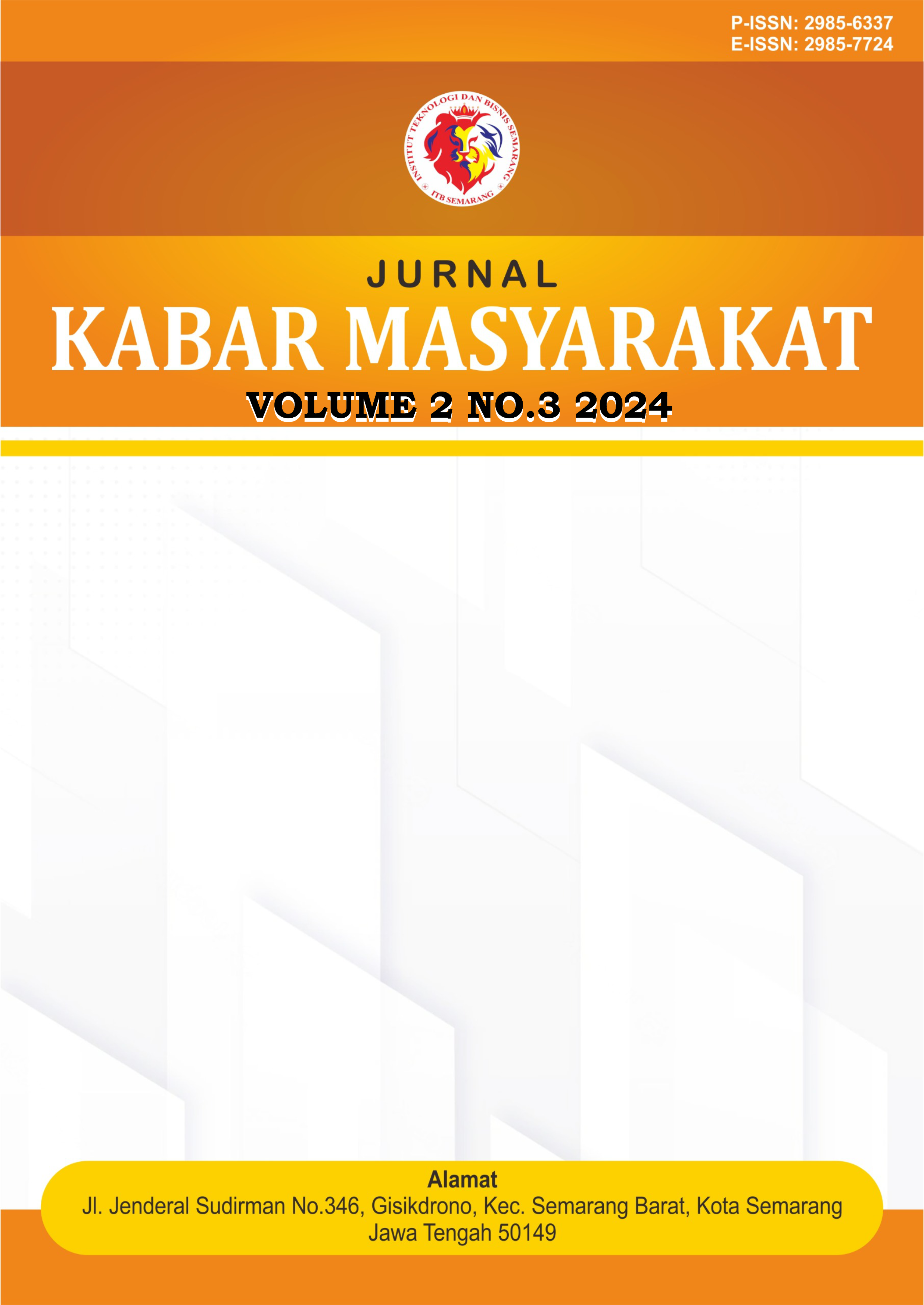Pemanfaatan Barang Bekas Menjadi Komposter Anaerobik sebagai Upaya Pengelolaan Sampah Organik di Desa Bluru Kidul, Sidoarjo
DOI:
https://doi.org/10.54066/jkb.v2i3.2292Keywords:
Bluru Kidul Village, Composters, Fertilizer, Organic WasteAbstract
Indonesia's population reached 282,477,584 in 2024, presenting significant challenges in waste management, especially in densely populated areas. In Sidoarjo, the waste volume amounts to 598 tons per day, with a recycling rate of only 7-9%. The Kuliah Kerja Nyata Tematik (KKN-T) program in Bluru Kidul village aims to enhance waste management through the promotion of anaerobic composters, which convert organic waste into compost. This community service initiative involves identifying issues, observing conditions, formulating solutions, and educating on the importance of household waste management, particularly organic waste, for producing useful plant fertilizer. This outreach session provided residents of Desa Bluru Kidul with new understanding and skills to utilize used gallon containers as anaerobic composters and organic waste as raw material for oxygen-free compost, thereby supporting Sustainable Development Goal (SDG) 12, which focuses on environmentally conscious consumption and production in villages
References
Aming, B. (2024). Volume sampah yang masuk ke TPA Sidoarjo. Dinas Lingkungan Hidup dan Kebersihan (DLHK) Sidoarjo.
Istiqomah, N., Mafruhah, I., & Gravitiani, E. (2020). Konsep reduce, reuse, recycle dan replace dalam pengelolaan sampah rumah tangga di Desa Polanharjo Kabupaten Klaten. Jurnal SEMAR, 8(2), 30–38.
Juriah, S., & Sari, W. P. (2018). Jurnal analis kesehatan klinikal sains. Klinikal Sains, 6(1), 24–29. http://jurnal.univrab.ac.id/index.php/klinikal/article/view/525/361
Kementerian Dalam Negeri Republik Indonesia. (2024). Data kependudukan bersih (DKB) 2024. Kementerian Dalam Negeri Republik Indonesia.
Kementerian Lingkungan Hidup dan Kehutanan Republik Indonesia. (n.d.). Tingkat daur ulang sampah di Indonesia. Kementerian Lingkungan Hidup dan Kehutanan Republik Indonesia.
Peraturan Presiden Republik Indonesia Nomor 97 Tahun 2017 tentang kebijakan dan strategi nasional pengelolaan sampah rumah tangga dan sampah sejenis sampah rumah tangga. (2017). Lembaran Negara Republik Indonesia Tahun 2017 Nomor 122. Sekretariat Negara Republik Indonesia.
Sapanli, K., Putro, F. A. D., Arifin, S. D., Putra, A. H., Andamari, H. A., & Anggraini, U. (2023). Pengelolaan sampah rumah tangga berbasis circular economy di tingkat desa: Pendekatan sistem dinamik. Jurnal Wilayah Dan Lingkungan, 11(02), 141–155.
Smith, P., & Tittel, J. (2017). Composting as a sustainable waste management solution. Waste Management, 62, 144-152. https://doi.org/10.1016/j.wasman.2017.01.028
Troschinetz, A. M., & Mihelcic, J. R. (2009). Sustainable recycling of waste in developing countries: A case study of the solid waste management system in Kenya. Resources, Conservation and Recycling, 53(6), 333-342. https://doi.org/10.1016/j.resconrec.2009.01.001
Woestho, C., Thamrin, D., Hutahaean, E. S. H., & Prasojo. (2020). Sosialisasi pengelolaan sampah melalui paradigma 3R di lingkungan masyarakat sekitar DAS Ciliwung. Jurnal ABDIMAS (Pengabdian Kepada Masyarakat), 3(2), 85–94.
Zhang, Y., Zhao, Y., & Zhang, C. (2021). Effectiveness of anaerobic composting in organic waste management. Journal of Environmental Management, 289, 112457. https://doi.org/10.1016/j.jenvman.2021.112457







